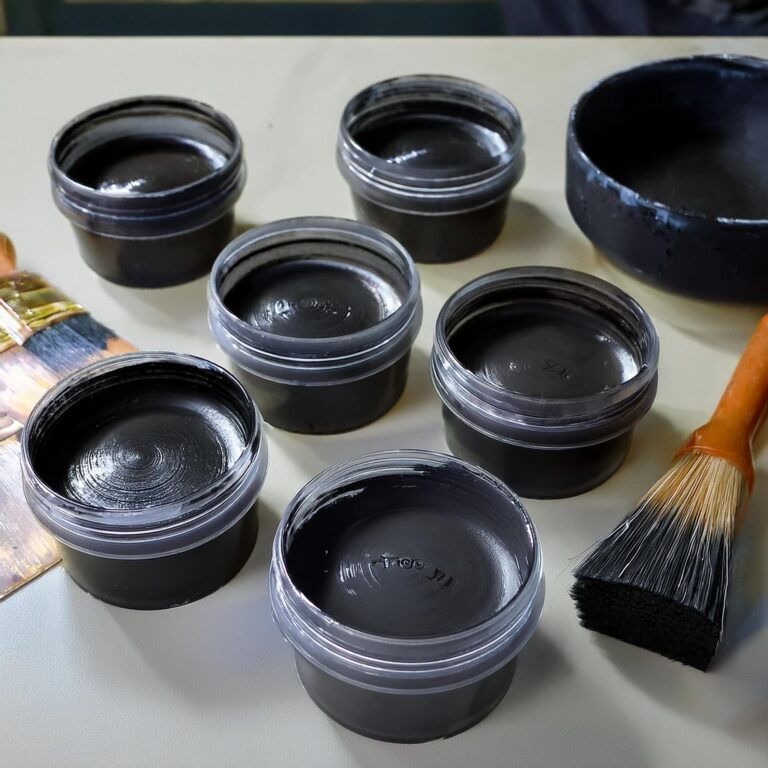Hey there, fellow clay enthusiasts! Today, we’re diving deep into the world of black slip for cone 10 firing. Finding the perfect black slip can be a game-changer for your high-fire ceramics, much like finding the perfect kitchen knife set is for a chef. Black slip is essentially a liquid clay mixture with added colorants that give it that deep, rich black we all love. When fired to cone 10 temperatures (around 2350°F or 1290°C), it can transform into something truly spectacular.
Why Use Black Slip in Cone 10 Firing?
Black slip is incredibly versatile in high-fire ceramics. Here’s why it’s so popular:
- Versatility: You can brush it, dip it, trail it, or use it for slip casting.
- Contrast: It creates stunning contrasts, especially in sgraffito techniques.
- Texture: At cone 10, black slip can develop interesting textures, from smooth and glossy to rough and matte.
- Depth: High-fire conditions allow the slip to mature fully, resulting in a depth of color that’s hard to achieve with lower fire methods.
- Glaze Interactions: Black slip can create fascinating effects when interacting with other glazes at high temperatures.
Using black slip in your ceramic work can be as transformative as adding perennial flowers to your garden – it adds depth, interest, and lasting beauty.
Top 5 Best Black Slips for Cone 10 Firing
- MidnightMagic Ultra Black Slip
- Ultra-fine particle size for smooth application
- High iron and manganese content for deep blacks
- Excellent for detailed work like slip trailing
- StoneFire Onyx Slip
- Groggy texture for added visual interest
- Very stable in both oxidation and reduction firings
- Creates a unique, slightly textured surface
- PureBlack Hi-Fire Slip
- Highly concentrated pigments for intense color
- Maintains its black color even when applied thinly
- Incredibly versatile for various application methods
- CeramicPro Ebony Slip
- Contains a blend of four different black colorants for depth
- Slightly glossy finish when fired to cone 10
- Rarely has issues with flaking or peeling
- ArtisanBlack Slip
- All-natural ingredients
- Develops speckles and variations in reduction firing
- Great for creating unique, one-of-a-kind effects
Choosing the right black slip is crucial, much like selecting the perfect sewing machine for your crafting needs – it can make or break your project.
Application Techniques
Proper application is key to achieving the best results with black slip. Here are the main methods:
- Brushing: Use a soft, wide brush and apply thin, even layers. This method offers great control.
- Dipping: Ideal for achieving an even coating, especially on smaller pieces.
- Spraying: If you have access to a spray booth, this method can give you a super smooth, even coating.
Remember to let each layer dry completely before applying the next. Proper preparation and application of black slip can be as crucial as choosing the right fans for your home – it’s all about creating the perfect environment for success.
Firing Considerations
When firing black slip at cone 10:
- Ensure the slip is completely dry before firing.
- Be mindful of shrinkage if applying slip to greenware.
- Handle slipped pieces carefully to avoid scratches or chips.
A typical firing schedule might look like this:
- Bisque fire: Slow ramp up to cone 06 (about 1830°F or 999°C)
- Glaze fire: Ramp up to cone 10 (about 2350°F or 1290°C) over 8-10 hours, then hold for 15-20 minutes before cooling
Remember, every kiln is different, so you might need to adjust these times and temperatures.
Conclusion
Mastering black slip in cone 10 firing can open up a world of creative possibilities in your ceramic work. It’s a skill that, once honed, can become as essential to your pottery practice as a good pair of running shoes is to a runner. Don’t be discouraged if your first attempts aren’t perfect – experimentation is part of the process. With practice and patience, you’ll be creating stunning high-fire pieces with beautiful black slip accents in no time.
For more creative inspiration, check out our articles on DIY home decor ideas or henna tattoos. While not directly related to ceramics, these could spark ideas for unique designs in your pottery work.
Happy potting!



